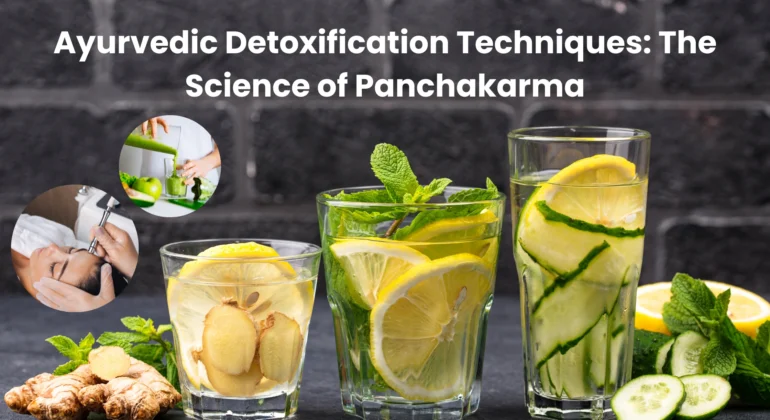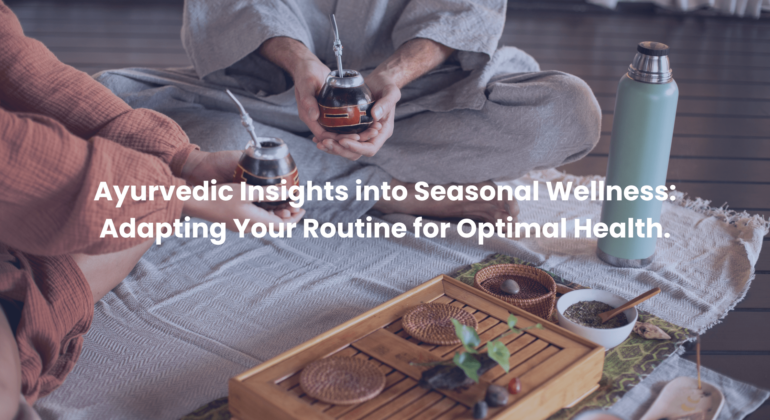Ayurvedic Sleep Remedies: Natural Ways to Improve Sleep Quality.
Discussing Ayurvedic herbs, routines, and practices that promote restful sleep. When the alarm goes off, a new day begins. Are you waking up feeling refreshed, energized, and eager to start your day – or are you feeling drowsy, irritable, and reaching for the snooze button? …
Ayurvedic Detoxification Techniques: The Science of Panchakarma.
Exploring how Panchakarma cleanses the body and mind, and its benefits in modern life. Panchakarma is the traditional form of detoxification of the body and mind that facilitates rejuvenation. It has been utilized for thousands of years as a method of staying healthy, young, and …
Ayurvedic Practices for Emotional Well-being: Cultivating Harmony and Joy.
Have you ever feel frustrated, anxious and stress out during your work time ? Is this pressure affecting your personal life, social life and even relationship ? Research has shown that emotional intelligence is twice as important as technical skills or IQ when it comes …
The Ayurvedic Approach to Enhancing Immune Function: Strengthening the Body’s Defences.
“The immunity, vyadhi-kshamatva, is a strength within all of us that resists the causes of diseases and their aggressive tendencies.” – Chakrapani Datta : Charak samhita commentator We had learned many lessons during COVID-19 pandemic regarding health. The pandemic has challenged health care systems across …
Ayurvedic Strategies for Managing Chronic Pain: Finding Relief without Side Effects.
Almost everyone has experienced some type of pain in their lives. Acute pain is a protective response to tissue injury that typically resolves with the healing process and lasts less than three months. However, for one in five people around the world, their pain persists …
Ayurvedic Insights into Seasonal Wellness: Adapting Your Routine for Optimal Health.
Some observations related to season wise outburst of diseases. Common cold and flu are most common during the fluctuations in weather. Peak time generally occurs between late December and early March in most parts. Arthritis, skin diseases (eczema & psoriasis), flare up in winter. Children …
Ayurvedic Perspectives on Heart Health: Supporting cardiovascular wellness Naturally.
A boy with age 28 years collapsed due to cardiac arrest during trekking. He recovered well after hospitalization and due to crucial help by surrounding people at that moment. Your brain is not having enough oxygen supply that is why you are facing problems related …
Ayurveda and Stress Relief: Holistic Techniques for Relaxation and Resilience.
As per the study, every third person in India is grappling with stress. The report said that 77% of Indians experience at least one symptom of stress regularly. Survey of more than 5,000 employees in India found that professionals between ages 21 and 30 years …
The Ayurvedic Guide to Enhancing Energy Levels and Vitality.
Vitality means the state of being full of energy. It is person’s ability to live, grow, and develop.Vitality also refers to having energy and being vigorous and active. In the physical sense, this vitality refers to feeling healthy, capable, and energetic. Mental vitality is a …
Ayurvedic Practices for Joint Health and Mobility: Strengthening the Body
Walking is best and basic exercise for fitness but my knees are hurting everyday due to osteoarthritis. Should I continue my walk or is it affecting my knees negativity? Can I practice Suryanamaskar and asana having backward bends daily which I used to practice since …










